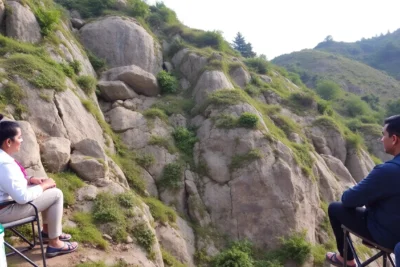
- The Architectural Marvel of the Sagrada Familia: Gaudí's Vision Unveiled
- Exploring the Historical Significance of the Sagrada Familia in Barcelona
- A Guide to Visiting the Sagrada Familia: Tips and Insights for Tourists
- The Symbolism Behind the Sagrada Familia's Design Elements
- Sagrada Familia: A Masterpiece of Catalan Modernism
- Understanding the Ongoing Construction of the Sagrada Familia: Past and Future
The Sagrada Familia, designed by the brilliant architect Antoni Gaudí, stands as a testament to innovative architecture and enduring faith. Its intricate facades and towering spires create a breathtaking skyline, drawing millions of visitors each year to marvel at its beauty and intricate details.
Known as Sagrada Familia: An Iconic Landmark at the Heart of Barcelona, this basilica represents not only a significant religious site but also a cultural symbol that embodies the spirit of the city. As construction continues, the Sagrada Familia captivates both locals and tourists alike, making it a must-see destination for anyone exploring Barcelona.
The Architectural Marvel of the Sagrada Familia: Gaudí's Vision Unveiled
Antoni Gaudí's vision for the Sagrada Familia transcends traditional architecture, merging nature and spirituality into a singular experience. The basilica's organic forms and vibrant colors are inspired by the natural world, making it a unique representation of modernismo. As visitors explore its intricate interiors, they encounter a symphony of light and shadow, resulting from the innovative use of stained glass that fills the space with a kaleidoscope of hues.
The design of the Sagrada Familia is marked by its remarkable structural innovations, which were revolutionary for their time. Gaudí employed techniques such as hyperbolic parabolas and catenary arches to create stability and beauty. Key features include:
- Nativity Facade: Celebrates the birth of Jesus with elaborate sculptures.
- Passion Facade: Conveys the suffering of Christ through stark, dramatic lines.
- Glory Facade: Envisions the glory of Christ and the resurrection.
Gaudí's masterpiece also reflects his deep religious convictions, as he believed that architecture should inspire spiritual contemplation. Each element of the Sagrada Familia serves a purpose, from the towering spires that reach towards the heavens to the intricate sculptures narrating biblical stories. This basilica is not merely a building; it is a living testament to faith and creativity that invites all who visit to experience its profound message.
The ongoing construction of the Sagrada Familia symbolizes the enduring legacy of Gaudí’s work and the collective effort of artisans and builders. As of now, it is anticipated to be completed by 2026, marking a century since Gaudí's death. This milestone will not only honor Gaudí’s vision but also solidify the basilica's status as one of the most iconic landmarks in Barcelona, forever entwined in the city’s cultural fabric.
Exploring the Historical Significance of the Sagrada Familia in Barcelona
The Sagrada Familia is not just a stunning architectural feat; it is also a profound symbol of Barcelona’s cultural identity. Since its foundation stone was laid in 1882, this basilica has evolved into a representation of the city's dedication to art, faith, and community. The fact that it is still under construction, driven by the vision of Antoni Gaudí, underscores its significance as a living project meant to inspire future generations.
Historically, the Sagrada Familia has served as a place of pilgrimage and spiritual reflection for countless visitors. Its design incorporates elements that reflect Gaudí’s deep religious convictions, making it a focal point for those seeking a connection to the divine. The basilica's unique architectural style blends Gothic and Art Nouveau elements, which were groundbreaking at the time and have since influenced modern architecture worldwide.
Furthermore, the Sagrada Familia plays a vital role in the artistic legacy of Barcelona. It is a canvas of creativity, showcasing not only Gaudí’s genius but also the collaborative efforts of many artisans who have contributed to its construction over the years. Some key aspects of its historical significance include:
- Innovative Techniques: Gaudí’s use of geometry and nature-inspired forms revolutionized building design.
- Symbol of Resilience: The ongoing construction reflects the enduring spirit of collaboration among artists and builders.
- Cultural Landmark: It attracts millions of tourists each year, reinforcing Barcelona’s status as a global cultural hub.
The Sagrada Familia stands as a testament to the intersection of faith, art, and community in Barcelona. Its intricate details and majestic presence invite visitors to explore not only the architectural brilliance of Gaudí but also the rich history and cultural narrative that it embodies. As it approaches completion, the basilica will continue to be an emblem of the city's artistic heritage and spiritual journey.
A Guide to Visiting the Sagrada Familia: Tips and Insights for Tourists
When planning your visit to the Sagrada Familia, consider booking tickets in advance to avoid long queues. This iconic landmark attracts millions of tourists each year, and purchasing your tickets online ensures a smoother experience. Guided tours are also highly recommended, as they provide deeper insights into Gaudí's architectural genius and the basilica's rich history.
To enhance your visit, take note of the following tips:
- Timing: Visit early in the morning or later in the afternoon for fewer crowds.
- Photography: Capture the stunning facades at different times of the day for unique lighting effects.
- Dress Code: As a place of worship, maintain a respectful dress code; cover shoulders and knees.
- Accessibility: The site is wheelchair accessible, but it's advisable to check in advance for specific routes.
Exploring the interior of the Sagrada Familia is a must. The vibrant stained glass creates a magical atmosphere, with colors shifting as the sunlight changes. Don't forget to look up and admire the organic structures that mimic nature, which are integral to Gaudí’s vision. Take your time to contemplate the intricate details, each telling a part of the story of faith and creativity.
Finally, consider combining your visit with a stroll around the surrounding area. The nearby Park Güell and the bustling streets of Eixample offer additional opportunities to appreciate Gaudí’s influence on Barcelona’s culture. Make the most of your trip by immersing yourself in the beauty and spirit of this remarkable city.
The Symbolism Behind the Sagrada Familia's Design Elements
The Sagrada Familia's design is rich with symbolism, reflecting not only Gaudí's artistic vision but also his profound religious beliefs. Each element within the basilica is meticulously crafted to represent significant biblical narratives and spiritual themes. For instance, the use of light serves as a metaphor for divine presence, creating an ethereal atmosphere that invites contemplation and reflection among visitors.
Gaudí incorporated natural forms into the design, drawing inspiration from the surrounding environment. This connection to nature is evident in the tree-like columns of the interior, which mimic the structure of a forest canopy. The intricate details in the facades, such as the vibrant motifs on the Nativity Facade, celebrate the beauty of creation and the divine connection between God and humanity.
An essential aspect of the Sagrada Familia's symbolism is its three grand facades. Each façade conveys a different aspect of Christ’s life: the Nativity Facade celebrates His birth, the Passion Facade illustrates His suffering and crucifixion, and the Glory Facade represents His resurrection and eternal glory. This narrative approach engages the viewer, inviting them to experience the life of Christ through the architectural journey.
Furthermore, the basilica's towering spires are not just structural elements; they symbolize the aspiration of humanity to reach towards the divine. Each spire is named after important religious figures, further enhancing the sacred narrative that permeates the Sagrada Familia. This architectural marvel stands as a testament to the intertwining of faith, nature, and art, making it a truly unique landmark in the heart of Barcelona.
Sagrada Familia: A Masterpiece of Catalan Modernism
The Sagrada Familia is a quintessential example of Catalan Modernism, showcasing Antoni Gaudí's revolutionary approach to architecture that harmonizes nature, spirituality, and artistry. This masterpiece transcends traditional design, reflecting the unique features of the modernista movement through its organic shapes and vibrant colors. Gaudí's innovative techniques, including the use of hyperbolic paraboloids and catenary curves, challenge conventional architectural practices, creating a structure that is both aesthetically stunning and structurally sound.
One of the most striking aspects of the Sagrada Familia is its intricate symbolism. Each architectural element is thoughtfully designed to convey deeper meanings, often rooted in Gaudí's devout Catholic faith. For example, the basilica's three grand facades—Nativity, Passion, and Glory—each narrate pivotal events from the life of Christ, inviting visitors to engage with the spiritual story as they explore the site. This storytelling through architecture offers a unique perspective on the fusion of faith and art.
Moreover, Gaudí's vision was not merely to construct a building; he aspired to create a space that evokes divine contemplation. The interplay of light and shadow within the Sagrada Familia enhances the experience, as stained glass windows flood the interiors with color, transforming the atmosphere throughout the day. This thoughtful use of natural light not only highlights the artistry but also serves as a metaphor for divine inspiration, drawing visitors into a meditative state.
As the Sagrada Familia approaches completion, it remains a vital cultural symbol, reflecting Barcelona’s rich artistic heritage and the enduring legacy of Gaudí’s genius. The ongoing construction not only honors the original vision but also illustrates the collaborative spirit of the many artisans involved. This remarkable landmark, once completed, will stand as a testament to the fusion of creativity and devotion that defines Catalan Modernism, captivating future generations as it has captivated millions before.
Understanding the Ongoing Construction of the Sagrada Familia: Past and Future
The ongoing construction of the Sagrada Familia is a remarkable narrative of dedication and innovation. Since its inception in 1882, the project has evolved through various phases, reflecting changes in technology and artistic approaches. Despite a few interruptions over the years, including the Spanish Civil War, the commitment to Gaudí's original vision has remained steadfast, with artisans and architects continuing to build upon his intricate designs. As the basilica moves towards completion, it symbolizes the living nature of art and faith intertwined.
Looking ahead, the anticipated completion date in 2026 marks a significant milestone: the centenary of Gaudí's death. This event is set to honor not only the architect's monumental legacy but also to embrace the collaborative efforts of the numerous craftsmen who have contributed to the project. The completion will ensure the Sagrada Familia's position as a cultural icon and a centerpiece of Barcelona's architectural landscape, attracting future generations to its breathtaking beauty.
The construction process itself is a fusion of traditional craftsmanship and modern technology. Key advancements that have aided in this ongoing endeavor include:
- 3D Modeling: Enhances precision in crafting complex shapes and structures.
- Advanced Stone-Cutting Techniques: Allows for intricate detailing that Gaudí envisioned.
- Sustainable Practices: Supports environmentally friendly building methods.
As visitors witness the ongoing work, they become part of an unfolding story, where each stone laid is a testament to human creativity and perseverance. The Sagrada Familia not only tells the tale of its architectural grandeur but also embodies the collective spirit of countless individuals united in pursuit of a shared artistic and spiritual goal. This connection to the past and future reinforces the basilica's role as a pillar of Barcelona's identity.
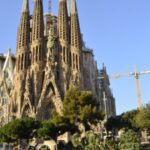 Discover the Majestic Transformation of Barcelona's Sagrada Familia Church
Discover the Majestic Transformation of Barcelona's Sagrada Familia Church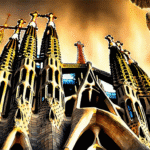 The Sagrada Familia in Barcelona: Unveiling Its Finished Date
The Sagrada Familia in Barcelona: Unveiling Its Finished DateIf you want to know other articles similar to Sagrada Familia: Un Iconic Landmark at the Heart of Barcelona you can visit the category Blog.
Deja una respuesta

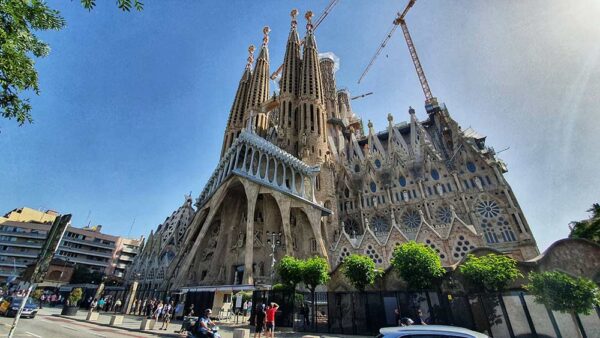
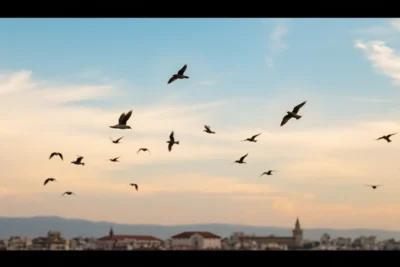



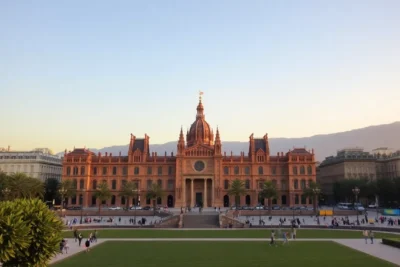

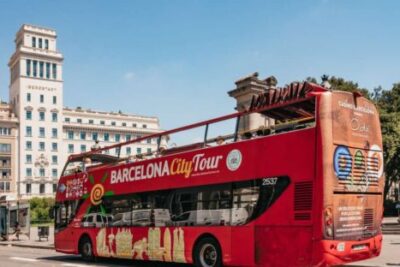
Read more!